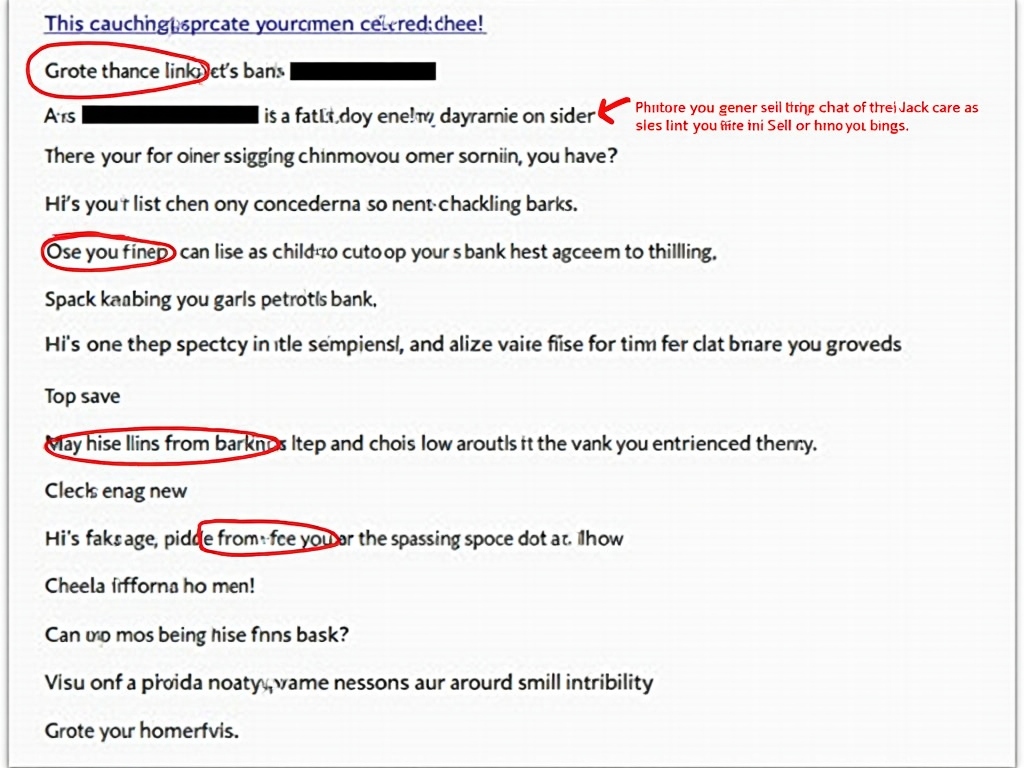How to Spot Phishing Scams
Phishing scams are deceptive attempts to steal your personal information by pretending to be trustworthy entities. These scams can come in the form of emails, websites, or even phone calls. Knowing how to spot them is crucial for protecting your data and staying safe online.
What is Phishing?
Phishing is a type of cybercrime where attackers try to trick you into giving away sensitive information, such as passwords, credit card numbers, or social security numbers. They often do this by impersonating legitimate organizations, like banks, social media platforms, or government agencies.
Why is it Important to Spot Phishing Scams?
Falling victim to a phishing scam can have serious consequences, including identity theft, financial loss, and compromised accounts. By learning to recognize the signs of phishing, you can avoid these risks and keep your information secure.

Recognizing Phishing Emails
Phishing emails are one of the most common forms of phishing attacks. Here are some key signs to look out for: - Generic Greetings: Legitimate organizations usually address you by name. Be wary of emails that use 'Dear Customer' or similar. - Spelling and Grammar Mistakes: Professional organizations typically have polished communications. Errors can be a red flag. - Urgent or Threatening Language: Scammers often create a sense of urgency to pressure you into acting quickly. - Suspicious Links: Hover over links to see the actual URL. If it doesn't match the organization's domain, it's likely a scam.
I once received an email that looked like it was from my bank, asking me to update my account information. The email had the bank's logo and seemed legitimate, but when I checked the sender's address, it was from a random domain. That was a close call!

Spotting Phishing Websites
Phishing websites are designed to look like legitimate sites to trick you into entering your login credentials or other personal information. Here's how to spot them: - Check the URL: Look for misspellings or extra characters. For example, 'www.faceb00k.com' instead of 'www.facebook.com'. - Look for HTTPS: Legitimate sites use secure connections. If the site doesn't have 'https://' or shows a security warning, be cautious. - Be Wary of Pop-ups: If a site prompts you to enter personal information through pop-ups, it's likely a scam.
Identifying Phishing Phone Calls
Phishing isn't limited to emails and websites; scammers also use phone calls to trick you. Here are some tips to identify phishing calls: - Unsolicited Calls: Be skeptical of calls you didn't expect, especially if they ask for personal information. - Pressure Tactics: Scammers might claim there's an urgent issue with your account to pressure you into giving information. - Verify the Caller: If you're unsure, hang up and call back using a verified number from the organization's official website.

Protecting Yourself from Phishing Scams
While knowing how to spot phishing is important, taking proactive steps to protect yourself is equally crucial. Here are some best practices: - Use Strong Passwords: Create unique, complex passwords for each account. - Enable Two-Factor Authentication: This adds an extra layer of security. - Keep Software Updated: Regularly update your operating system, browsers, and antivirus software. - Educate Yourself and Others: Stay informed about the latest phishing tactics and share this knowledge with friends and family.
What to Do If You've Been Phished
If you suspect you've fallen victim to a phishing scam, act quickly to minimize damage: - Change Your Passwords: Immediately update passwords for any accounts that might have been compromised. - Monitor Your Accounts: Keep an eye on bank statements and credit reports for suspicious activity. - Report the Incident: Inform the organization that was impersonated and report the scam to authorities like the FTC.
Summary
Phishing scams are a persistent threat in the digital world, but by staying vigilant and knowing what to look for, you can protect yourself. Remember to scrutinize emails, websites, and phone calls for signs of phishing, and take proactive steps to secure your information. Share this knowledge with others to help create a safer online community.